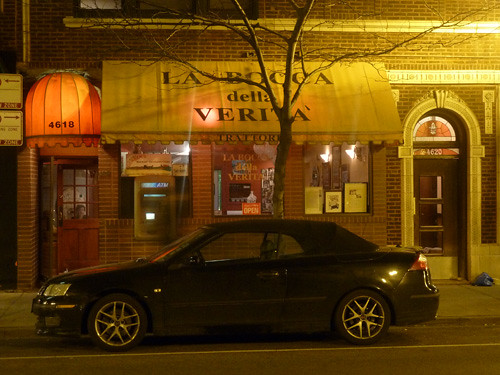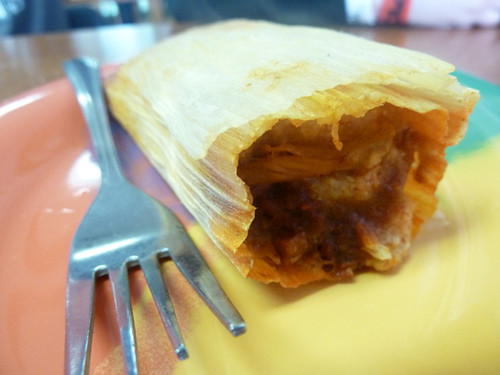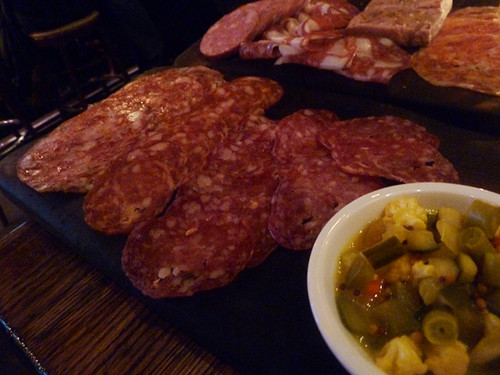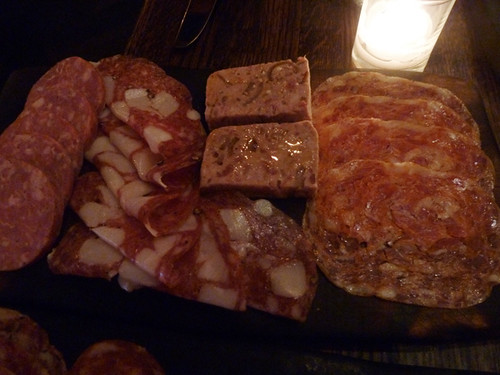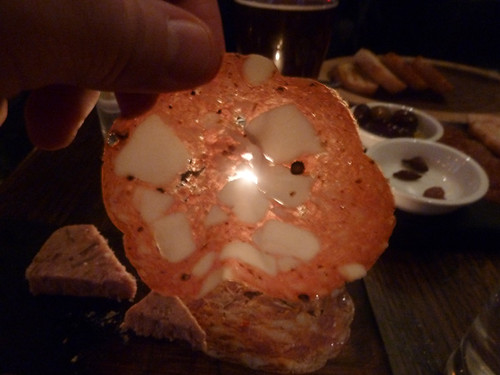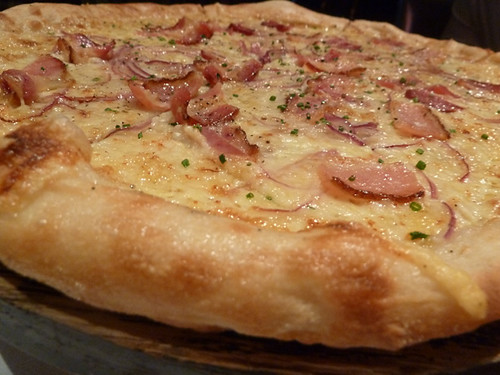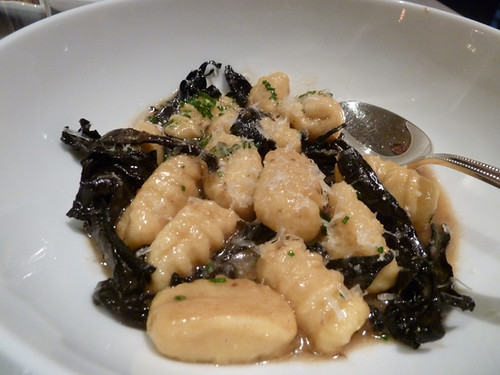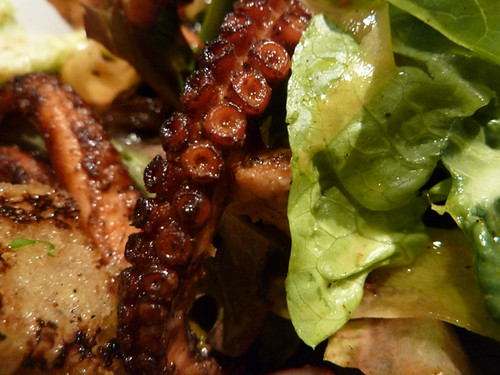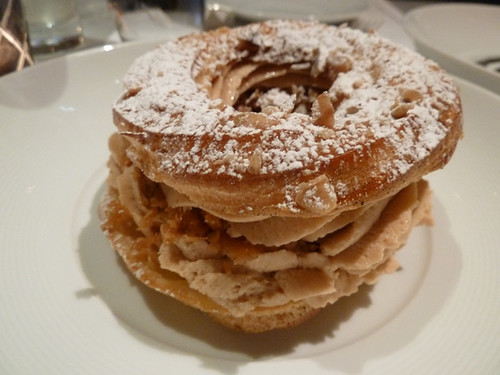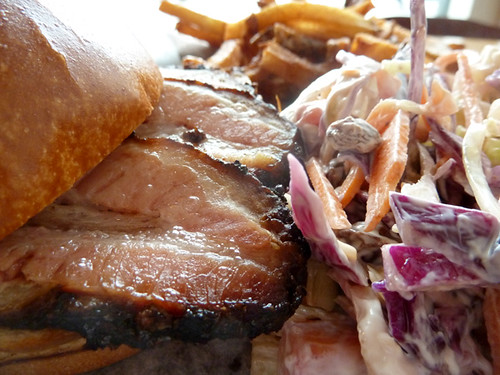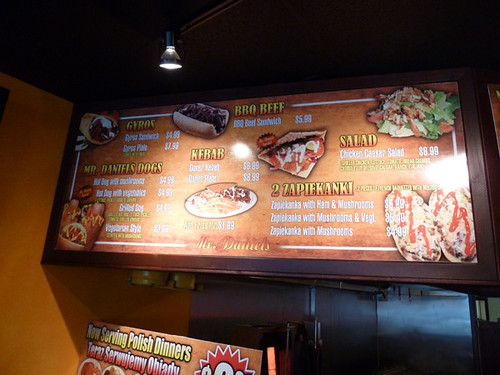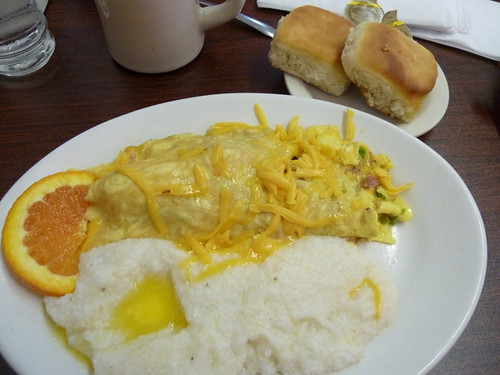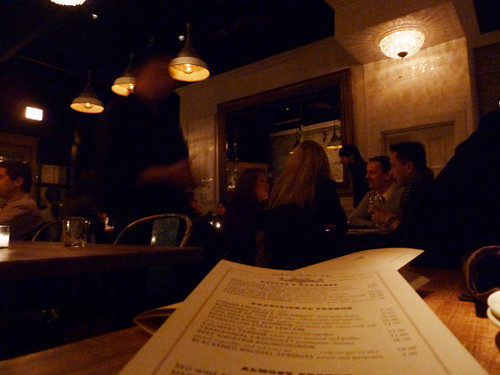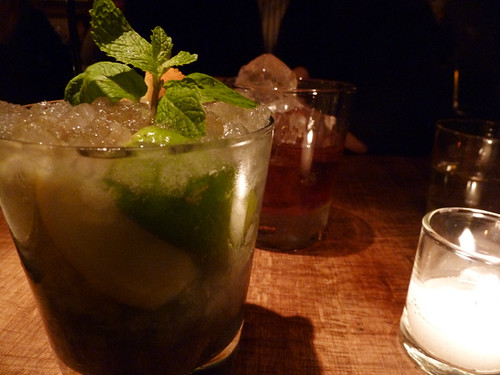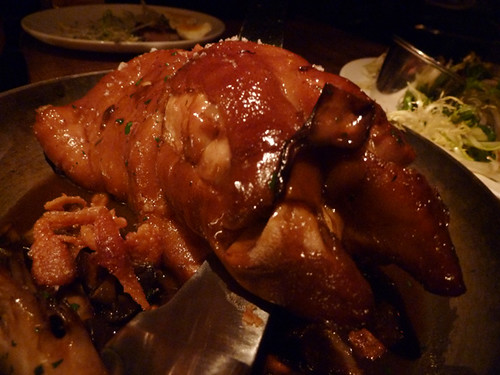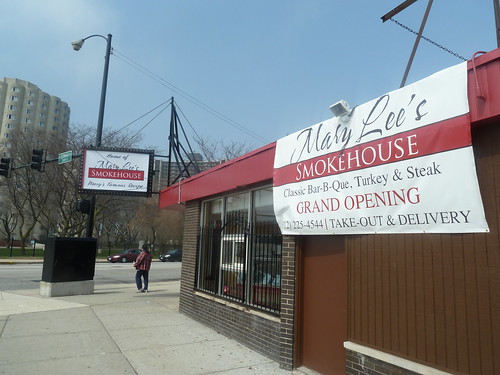
The so-called aquarium smoker— I say so-called because the main manufacturer, Avenue Metal, doesn’t actually call them that, and the term was probably invented by Chowhounders/future LTHers in this thread— has seemed a bit of an endangered species to barbecue-minded foodies, facing the double threat of local restrictions on open flame and smoke smell, and the fact that gas-fired cookers with smoke boxes are easier (and, in the best hands, can produce excellent barbecue, as at Smoque).
So there was some excitement when the proprietor of a new spot, Smoke Signals, sent out press releases announcing the best BBQ in the universe or something, and featured a glass pit prominently in the middle of his shop. (I believe it is an Avenue Metal-made pit; I learned you could spot theirs by the design quirk of the hexagonally-rounded corners.) So far reports don’t seem to suggest that his ‘cue lives up to his claims, but you know, give him six months or a year, who knows? I’m glad to see someone trying, anyway.
The real news is, his isn’t the only place with a new glass pit in town.

I’m kind of surprised no one’s spotted Mary Lee’s Smokehouse, because it’s in a fairly high-profile location— on Cermak just east of Chinatown, opposite Cafe Luciano’s. And the signage isn’t shy. I’ve hit it twice now, and if it’s not a great barbecue place yet, it clearly is modeling itself on the places that do it best, and doing an entirely creditable job by the classics:
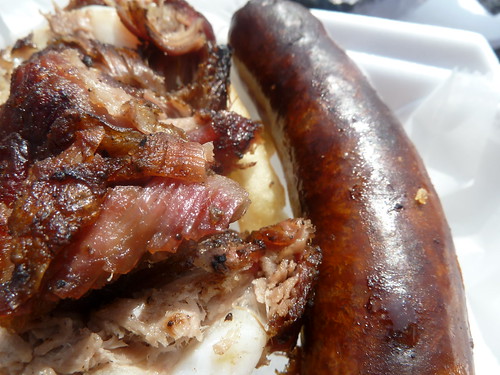
My sons and I ate a combo of rib tips and links at Ping Tom park on a nice day and enjoyed the light but definite smoke flavor and the spicy hot link just fine. There are a couple of other wrinkles to Mary Lee’s that are worth checking out, though I haven’t managed to have them yet due to being there at the wrong times. One is that they cook steak in the smoker— has anyone done that before? They sell a ribeye steak, which you can have either off the regular grill, or the smoker. Needless to say, I think you’d be a fool to do anything but have it off the smoker; alas, the second time I went, they were sold out from the night before, so I have yet to try that, or the chicken which the menu seems proud of.
I also knew I’d be eating rewarmed barbecue that day, my fault for hitting a bbq joint at noon sharp, but having failed in my quest for steak, I figured rewarmed tips and links was still better than most other things close by. (I wasn’t thinking about Chinatown.) And I discovered something else about tips and links that have been cooked in the same smoker as steaks… they taste like steak! A definite beef-juices-hitting-hot-coals flavor coated the porky pork. Feel free to think that that’s either kind of cool or gross, I can’t decide myself. But I finished them. Sauce was very good in the typical sweet-spicy Chicago style; note that if you follow the standard LTHForum advice to order sauce on the side (which I mostly agree with), they’ll charge you something like $1.50 for a sauce container. I let it slide the second time and just let them dunk everything in the sauce.
So check out Mary Lee’s, timing your visit as to how much you want your pork to taste like beef, I guess. I’ll be back for pig-tasting steak one of these days.
Mary Lee’s Smokehouse
2 E Cermak
Chicago, IL 60616
(312) 225-4544
Your barbecue zen moment:
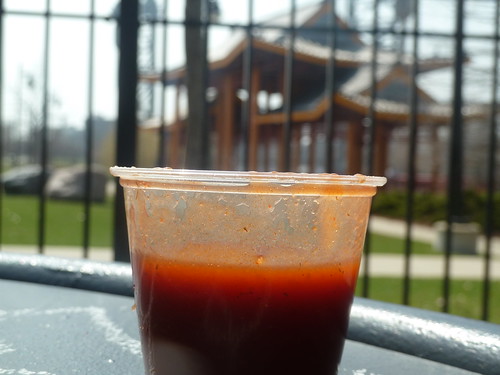
* * *
Not to bury the lede, but I’ve been visiting a lot of barbecue places lately… because I’m finally working on a new Sky Full of Bacon video podcast. I don’t want to hear any guff about how long it’s been since the last official one, I’ve made well over two hours’ worth of Key Ingredients in that time, but I promised a segment about barbecue long ago, going back to last summer when I shot interviews with a few well-known pitmasters for a Time Out Chicago print piece, which also yielded this short video. So I’ve been conducting other interviews and I think I will have some new insights into the history of Chicago’s own barbecue style by the time it’s done (whenever that will be).
Anyway, doing so I found myself deep on the south side, down where street names have three digits, and so I took the opportunity to finally try a couple of barbecue places that have been written about on LTHForum and elsewhere, but which I had never been to with favorites like Uncle John’s half as far away.

Exsenator’s in south suburban Markham looks more like small town America than south side Chicago. You expect a cozy cafe serving early bird specials to retirees from the outside, and it’s a bit jarring to find the usual intimidating bulletproof glass ordering system inside. But apart from the building, this is authentic Chicago barbecue with deep wood flavor. There’s just one thing I didn’t like about Exsenator’s, and it’s a big one if you forget the usual sauce-on-the-side advice. The sauce is the other thing that resembles a place where old folks would eat; it’s cloyingly sweet and completely devoid of any spice or complexity. It was like dunking your barbecue in applesauce. In this case, I’d tell them not just sauce on the side, but skip sauce entirely; the BBQ will be fine on its own.
Exsenator’s Ribs and Chicken
3349 W 159th St
Markham, IL 60428
(708) 333-1211
George’s Rib House’s notoriety among local barbecue fans is that George won’t cook with wood— he uses pure charcoal, because wood has worms, he says. So George’s BBQ doesn’t have a wood taste, it tastes like a backyard barbecue. But with these big meaty tips, cooked with care by a multi-person staff even on a quiet Saturday afternoon, you’re unlikely to be dissatisfied. Sometimes you feel like you’re eating around bone more than actually eating meat with rib tips, but not here. Good spicy sauce; fries were mushy, but maybe I just caught an off batch.
George’s Rib House
168 W 147th St
Harvey, IL 60426
(708) 331-9347
There will be more to come, I don’t want to give away the show yet, but you won’t go wrong this weekend hitting any of these three places as a new stop on the Chicago south side BBQ circuit.
Tags: bbq, South Side

 Posted in
Posted in 


